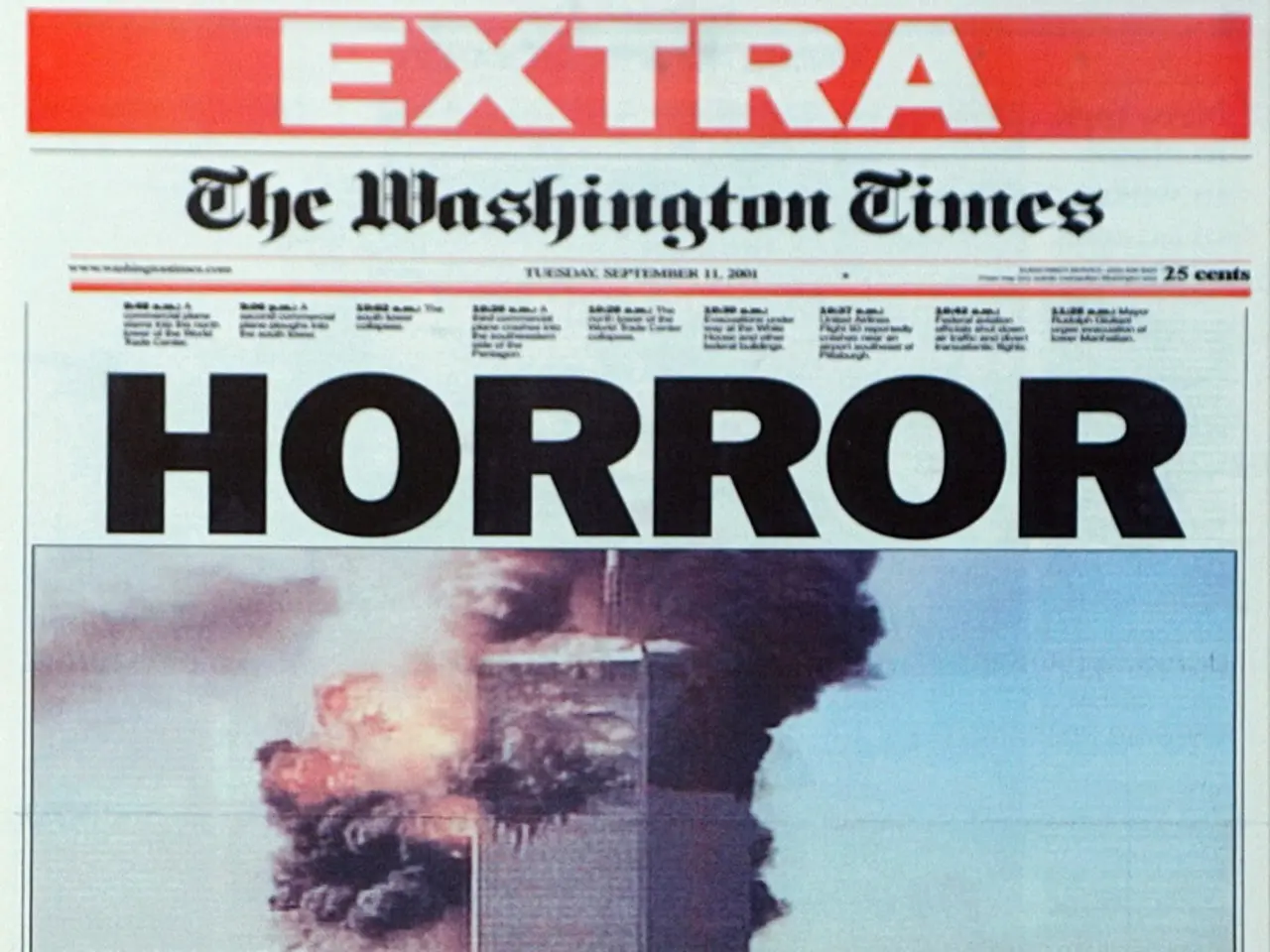Escalating Peril: Murder of Journalist in Gaza Delivers a Haunting Warning
In the ongoing Gaza war, which began in October 2023, the Israeli-Palestinian conflict has taken a devastating toll on journalists and media workers. According to the Committee to Protect Journalists (CPJ), a staggering 192 journalists and media workers have been killed by Israel during this period, with at least 184 of those being Palestinian[1][3][5].
This figure represents the deadliest period for journalists in the Israeli-Palestinian conflict on record, surpassing previous conflict records globally[1][3]. CPJ also reports that around 26 of these killings have been identified as deliberate targeting of journalists by Israeli forces[2].
Among the notable incidents, an Israeli airstrike on August 10, 2025, resulted in the death of six journalists, marking the deadliest single strike against media workers in this conflict[3][5].
The killing of Al Jazeera correspondent Anas al-Sharif in an air strike outside Gaza City's largest hospital complex on Sunday was noteworthy, occurring during a conflict that has been remarkably violent for journalists. Al Jazeera's executive has called for news organizations to step up and recruit more journalists, while Salah Negm, news director at Al Jazeera English, echoed this sentiment[6].
Journalists from various organisations, including Agence France-Presse, The Associated Press, BBC News, and Reuters, have been regularly reporting from Gaza. However, the dangerous conditions have forced some journalists, like 22-year-old Abubaker Abed, to leave Gaza to pursue his education in Ireland due to malnutrition and fear of being a target as a journalist[7].
Jodie Ginsberg, CEO of the Committee to Protect Journalists, is concerned about the implications for journalists in future conflicts if the attacks on journalists in Gaza are not condemned. Ginsberg stated that the attacks amount to a war crime and have had no consequences[4].
In response to the challenging conditions, journalists in Gaza are sourcing news from various sources, including journalists, doctors, hospitals, civil servants, and aid workers[8]. Recently, journalists from The Washington Post and the Guardian accompanied a Jordanian relief mission and took images of Gaza from the air, despite some restrictions from Israel[9].
As the conflict continues, many journalists working in Gaza are facing food shortages, similar to the people they are covering. An Aug. 7 AP dispatch described the hunger faced by many in Gaza, stating that a single bowl of eggplant stew must sustain a family for a day[10].
References:
- CPJ
- CPJ
- Reuters
- BBC News
- AP
- CNN
- Al Jazeera
- The New York Times
- The Washington Post
- AP
Read also:
- Court petitions to reverse established decision on same-sex marriage legalization
- Commemoration of 200 Days of American Resurgence Unveiled
- Minister Bärbel Bas expresses doubts about her tenure as a minister following a recent interview during the summer.
- Trump's enforcement actions in Washington D.C.: Insights from the political arena








